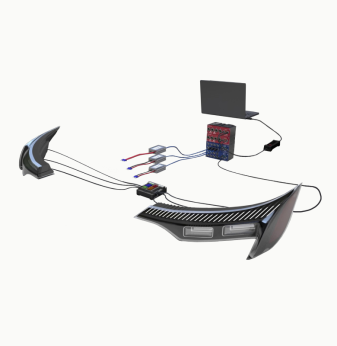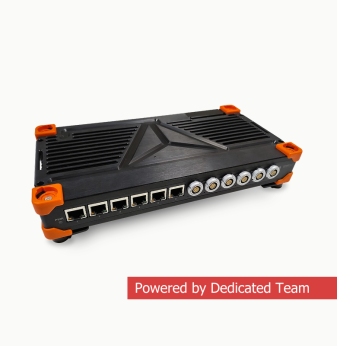Architecting Secure Firmware Update Pipelines: Chain of Trust, DFU Protocols, and Fail-Safe Recovery

Introduction: Why Secure Firmware Updates Are Critical in Embedded Systems
Firmware updates are no longer optional — they’re a fundamental requirement for modern embedded products. From IoT devices and wearables to industrial controllers and automotive ECUs, secure update mechanisms ensure your product can patch vulnerabilities, deliver new features, and remain compliant with evolving regulations. However, poorly implemented updates can brick devices, expose them to attackers, or introduce unstable behavior.
In this article, we explore how to architect robust and secure firmware update pipelines. We'll cover the building blocks of trust chains, secure bootloaders, DFU protocols, OTA architecture, and fail-safe recovery mechanisms to protect both user experience and system integrity.
The Threat Landscape of Insecure Updates
Embedded systems are often deployed in the field for 5–10 years — a lifetime in cybersecurity terms. Without secure update mechanisms, they become prime targets for:
- Remote code execution via unsigned firmware
- Man-in-the-middle attacks during OTA transmission
- Downgrade attacks using older, vulnerable versions
- Boot corruption and device bricking from failed installs
To avoid these risks, updates must be delivered, verified, and applied in a tightly controlled process.
Long-tail keyword example: "What are the security risks of firmware updates in IoT devices?"
Answer: IoT devices are often connected and remotely accessible, making them vulnerable to attackers who can hijack firmware updates. Risks include code injection, running outdated insecure firmware, or even rendering the device inoperable through corrupted update images. Implementing signing, encryption, and version checks is essential.
Key Elements of a Secure Firmware Update Pipeline
1. Chain of Trust
The foundation of secure firmware updates is a chain of trust established at boot:
- Starts with a hardware Root of Trust (RoT), like a fused public key hash or secure element
- Each layer validates the next: boot ROM → bootloader → kernel → application
- Firmware signatures are validated using asymmetric crypto (RSA, ECDSA)
The chain of trust ensures that only authorized code runs at each stage.
Long-tail keyword example: "How does chain of trust work in embedded firmware updates?"
Answer: In embedded systems, the chain of trust begins with immutable code stored in ROM or secure hardware. This initial code verifies the next boot stage's digital signature. Each stage verifies the integrity of the next, ensuring the entire boot and update process only executes trusted code.
2. Cryptographic Signing and Verification
All firmware images must be cryptographically signed by the vendor:
- Use ECDSA or RSA for signing; SHA-256 or better for hashing
- Store public keys in OTP, secure flash, or secure elements
- Bootloader verifies the firmware signature before applying update
- Avoid storing private keys on devices or in unprotected build systems.
3. Secure Bootloaders and Recovery Modes
A secure bootloader is the gatekeeper of updates. It must:
- Verify firmware signature before flashing
- Support fallback to known-good firmware on failure
- Lock access to memory regions and flash controls
- Optionally include a recovery console via USB or UART
Long-tail keyword example: "What is the role of secure bootloader in firmware updates?"
Answer: The secure bootloader ensures that only verified firmware can be written or executed on the device. It checks digital signatures, prevents flash manipulation, and handles failover procedures. It’s the backbone of firmware integrity in secure systems.
4. Device Firmware Update (DFU) Protocols
DFU defines the mechanism by which firmware is transferred to the device. Options include:
- USB DFU (e.g., STM32 DFU protocol)
- Bluetooth DFU (used in wearables)
- Custom serial DFU over UART/SPI/I2C
- Over-the-air DFU using Wi-Fi, LTE, or mesh networks
DFU protocols must include checksums, retransmission support, and rollback procedures.
5. Over-the-Air (OTA) Update Architecture
For remotely deployed devices, OTA is the only practical update path. Key design elements:
- Encrypted transport (TLS 1.2/1.3)
- Delta updates (only send changed parts)
- Version tracking and device segmentation
- Rate limiting and server-side authentication
Cloud-side infrastructure must include firmware repositories, logging, and audit trails.
Long-tail keyword example: "How to implement secure OTA updates for embedded Linux?"
Answer: Use a secure OTA framework like Mender, SWUpdate, or RAUC. Employ dual-partition schemes, encrypted artifacts, and TLS-secured transport. Integrate device authentication and signature validation into the OTA client. Add watchdog resets and recovery in case of install failure.
6. Fail-Safe Recovery and Dual Bank Flashing
To prevent bricking devices:
- Use dual-image or A/B partition schemes
- Always retain a working fallback image
- Bootloader checks integrity before switching active partition
- Watchdog resets if application fails to start
More advanced systems implement “canary boots” to validate the update before committing.
7. Lifecycle Security and Revocation
Even after deployment, device update pipelines must support:
- Certificate revocation (CRL or OCSP)
- Forced updates for critical patches
- Key rotation or key pinning migration
- Logging for forensic analysis of update failures or tampering
Long-tail keyword example: "What is key rotation in firmware update systems?"
Answer: Key rotation involves replacing the cryptographic keys used for signing firmware without compromising existing devices. It requires updating bootloaders or adding support for multiple verification keys and securely revoking the old ones without interrupting operation.

Testing and Validation Best Practices
Security is only as strong as its testing. Include:
- Signature validation stress tests
- Interrupted update simulations (power loss, network drop)
- Compatibility testing across device fleet
- Penetration testing for OTA endpoints
For certified products, align with standards like IEC 62443, NIST SP 800-193 (Firmware Resiliency Guidelines), or ISO/SAE 21434 for automotive.
Summary: Building Trust into the Update Path
Firmware updates are an essential but complex component of embedded product design. A secure pipeline must combine cryptographic assurance, protocol robustness, fallback mechanisms, and long-term lifecycle planning. Without it, products become vulnerable, unreliable, and non-compliant.
Start secure, and stay secure.
Why Promwad?
At Promwad, we build firmware update mechanisms that are secure by design. Our services include:
- Secure bootloader and chain-of-trust implementation
- OTA infrastructure design and integration
- Cryptographic firmware signing and verification
- Embedded Linux and RTOS-based update systems
- Compliance with IEC, ISO, and industry-specific standards
Let’s make your firmware update process bulletproof.
Our Case Studies in Firmware Development





